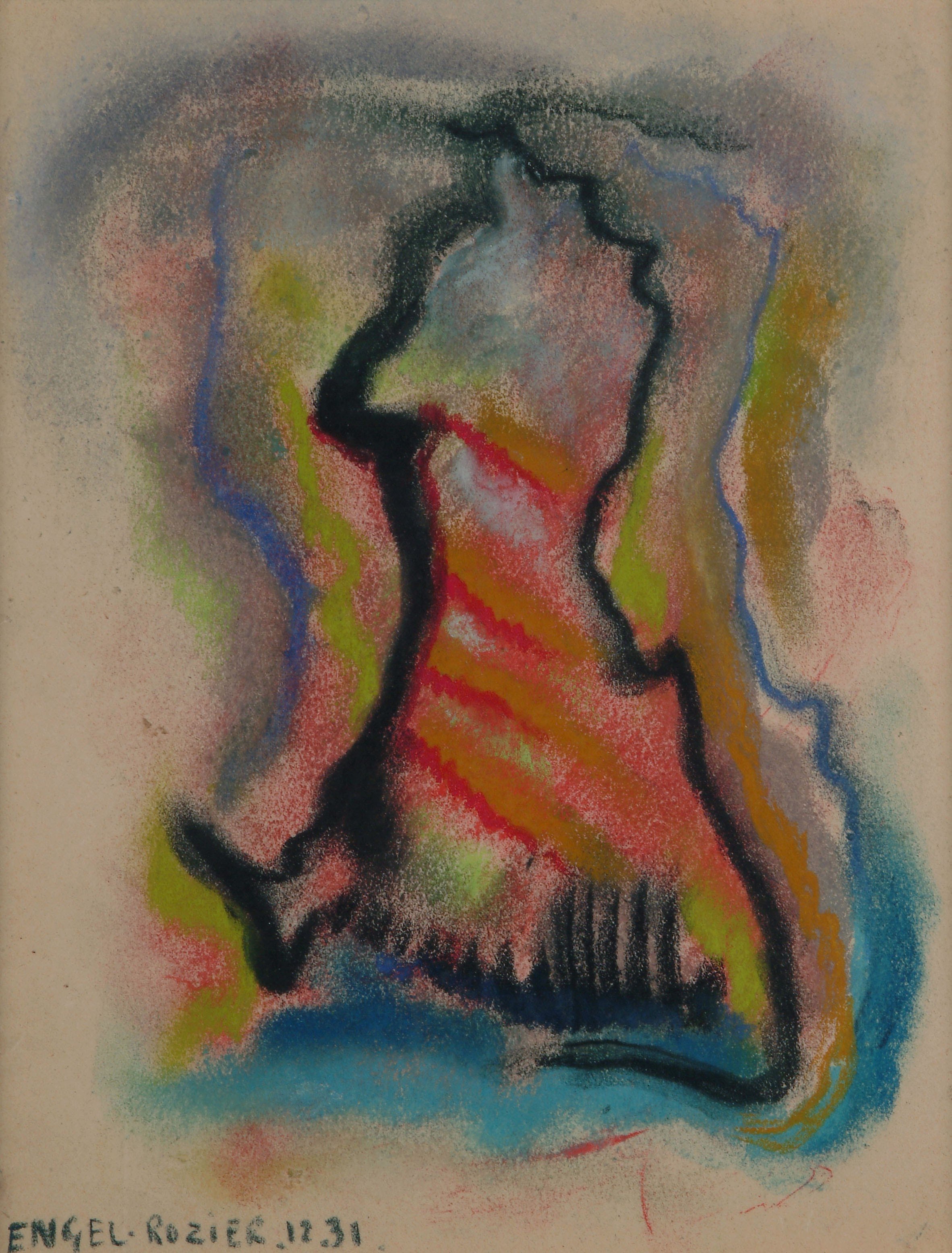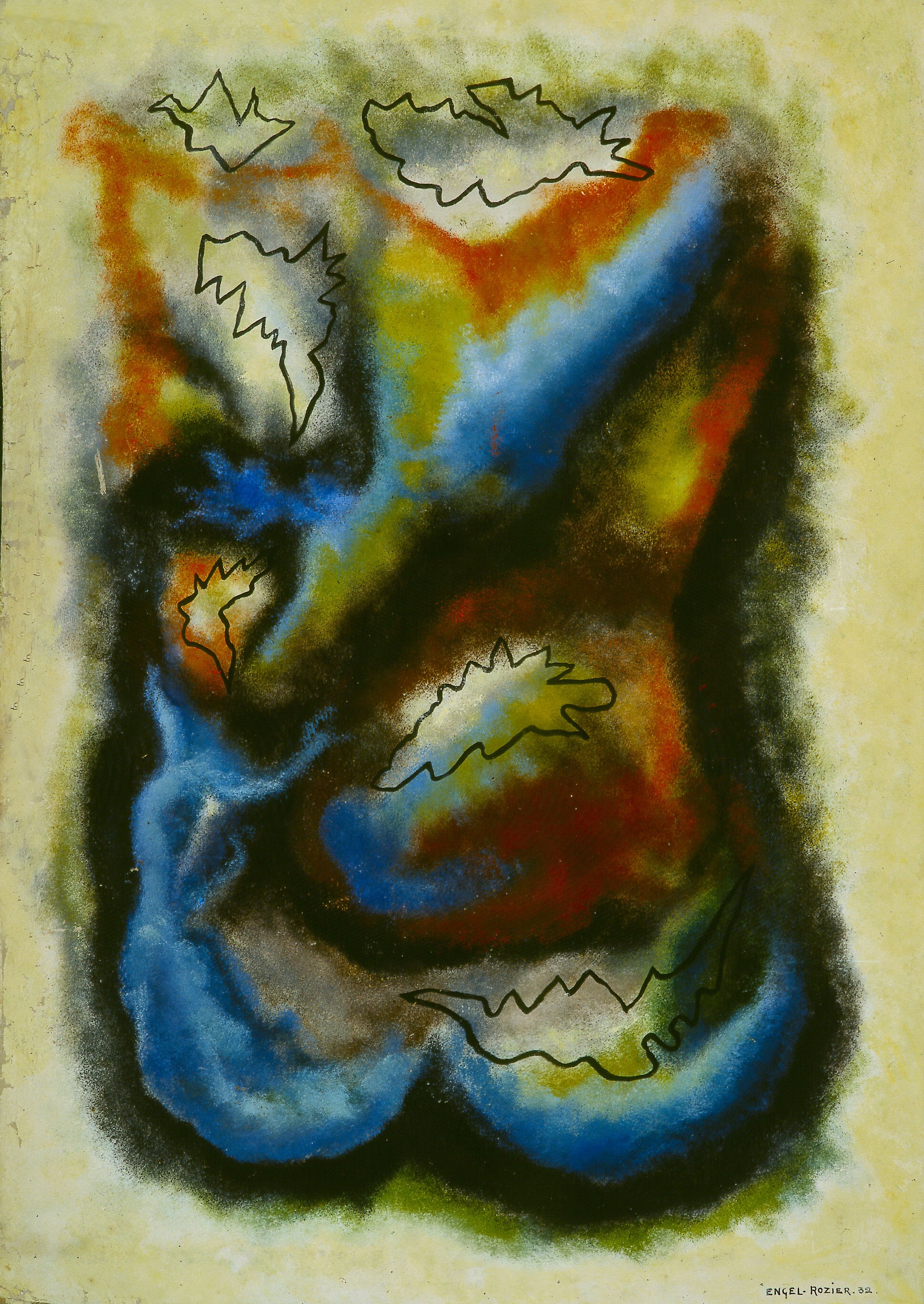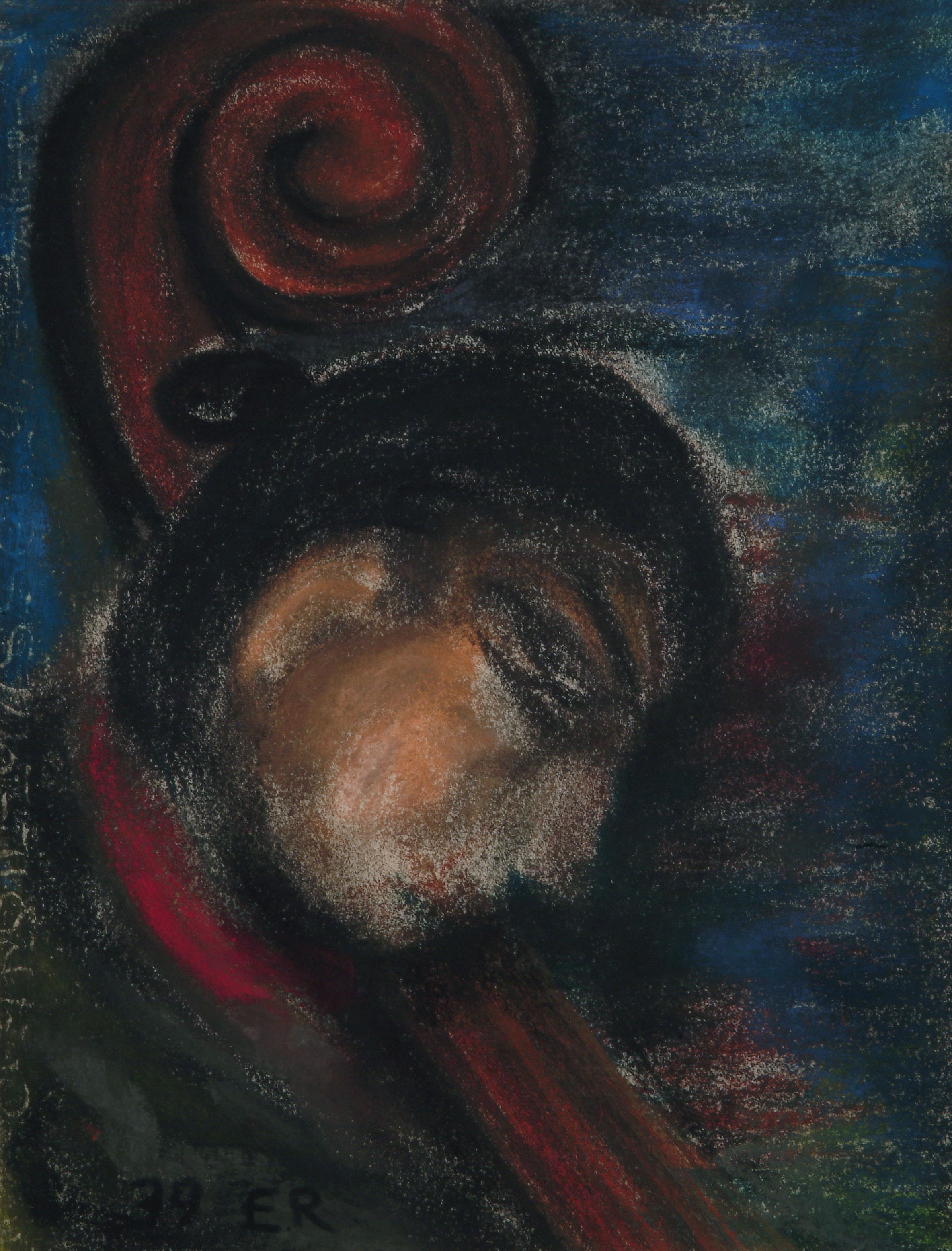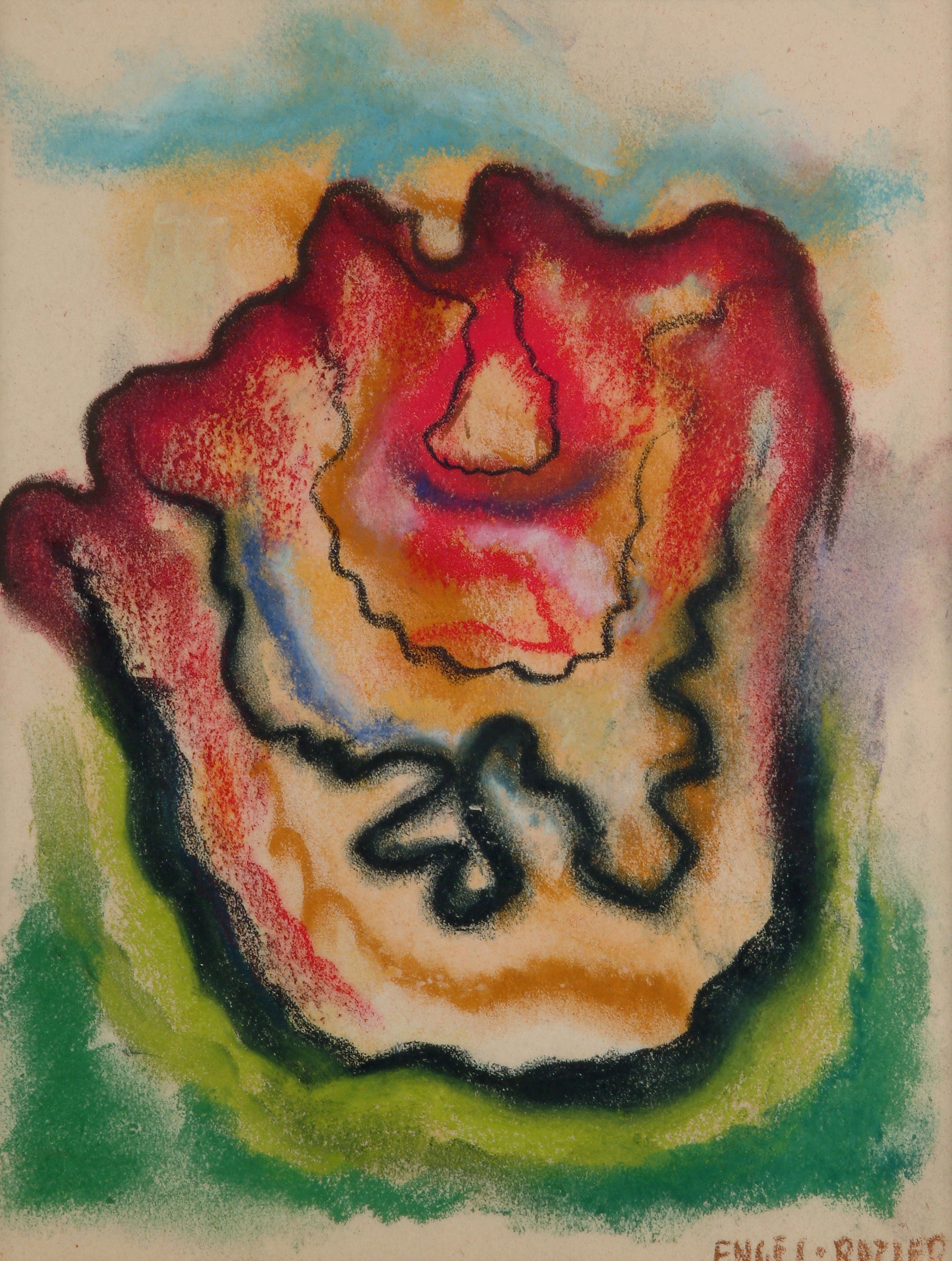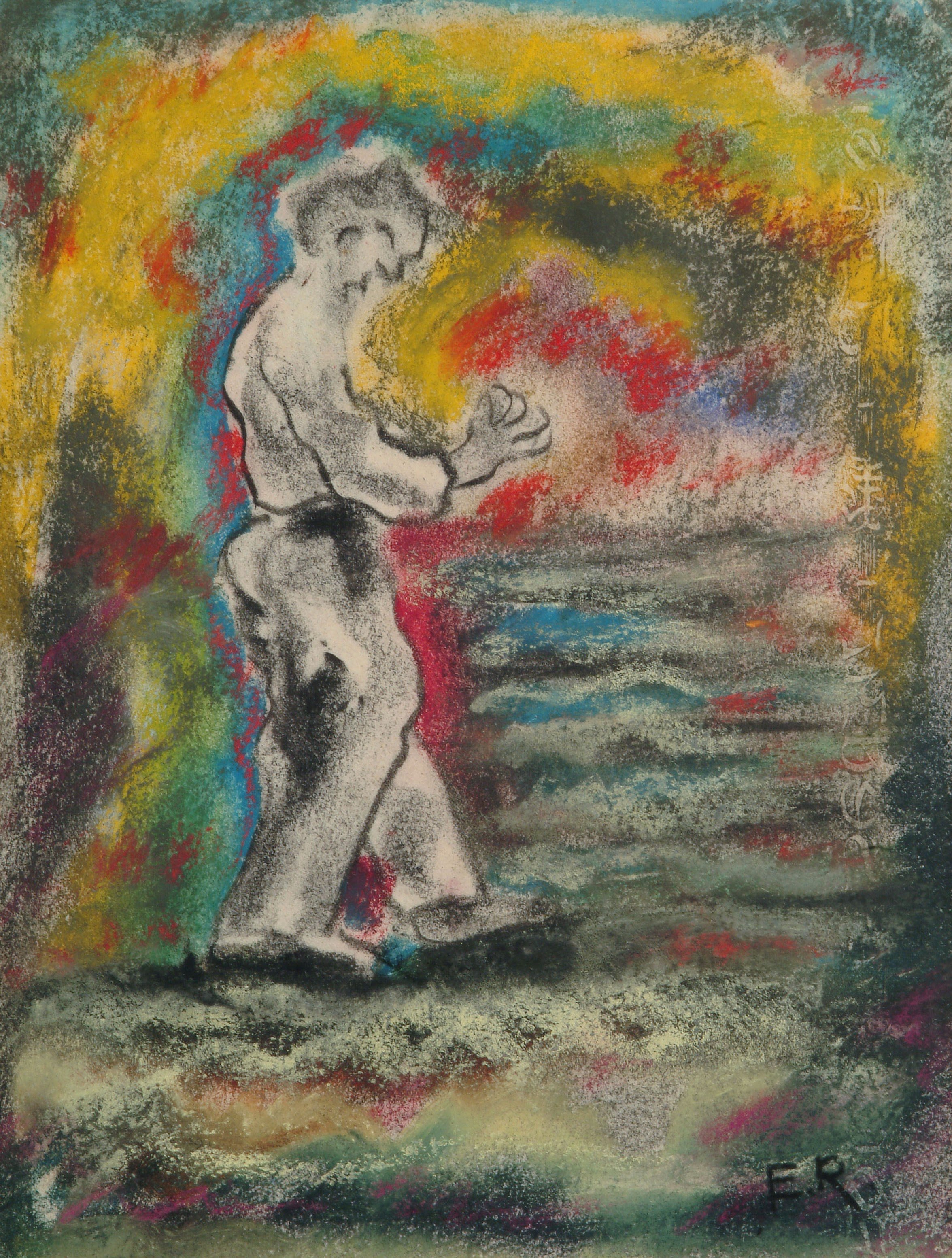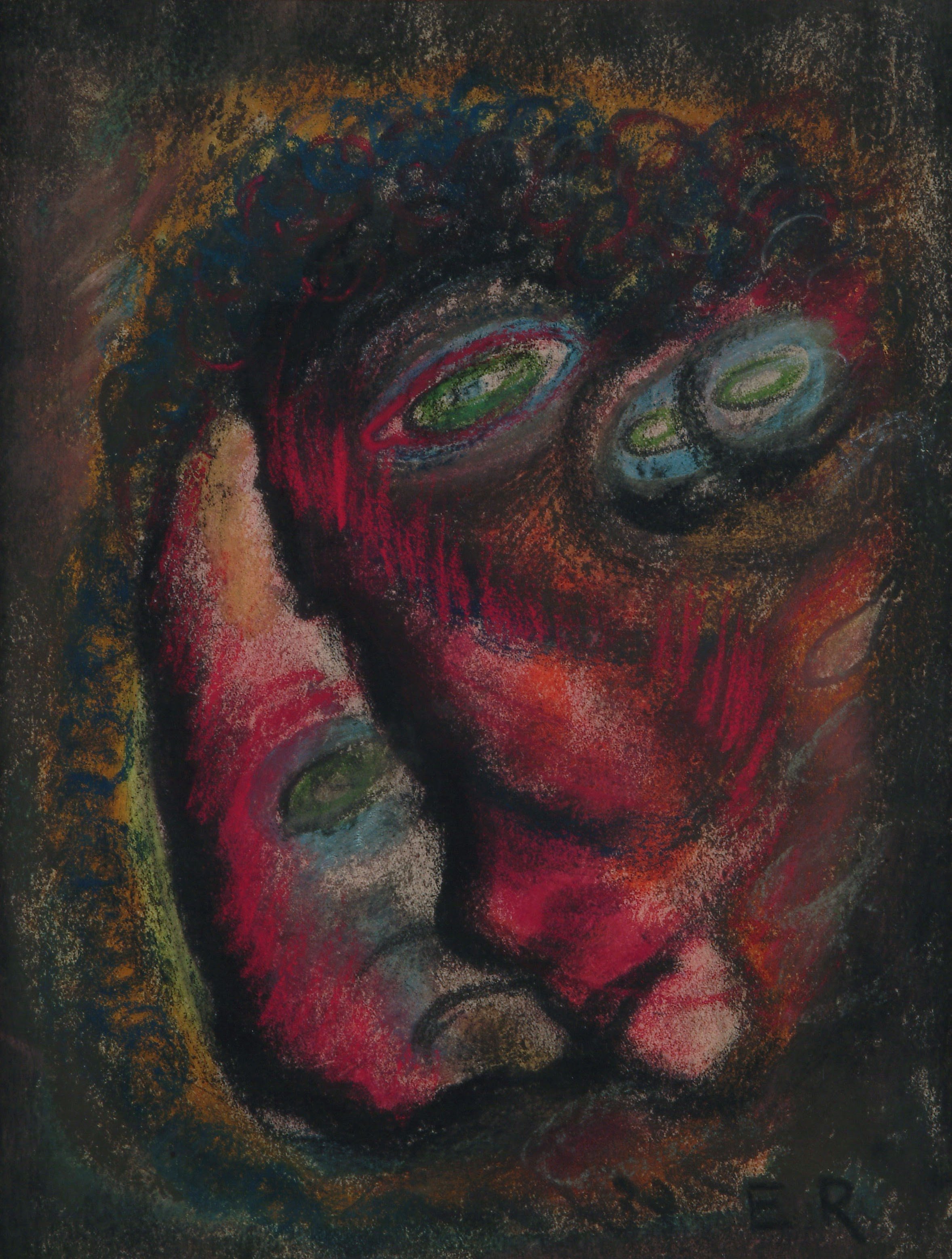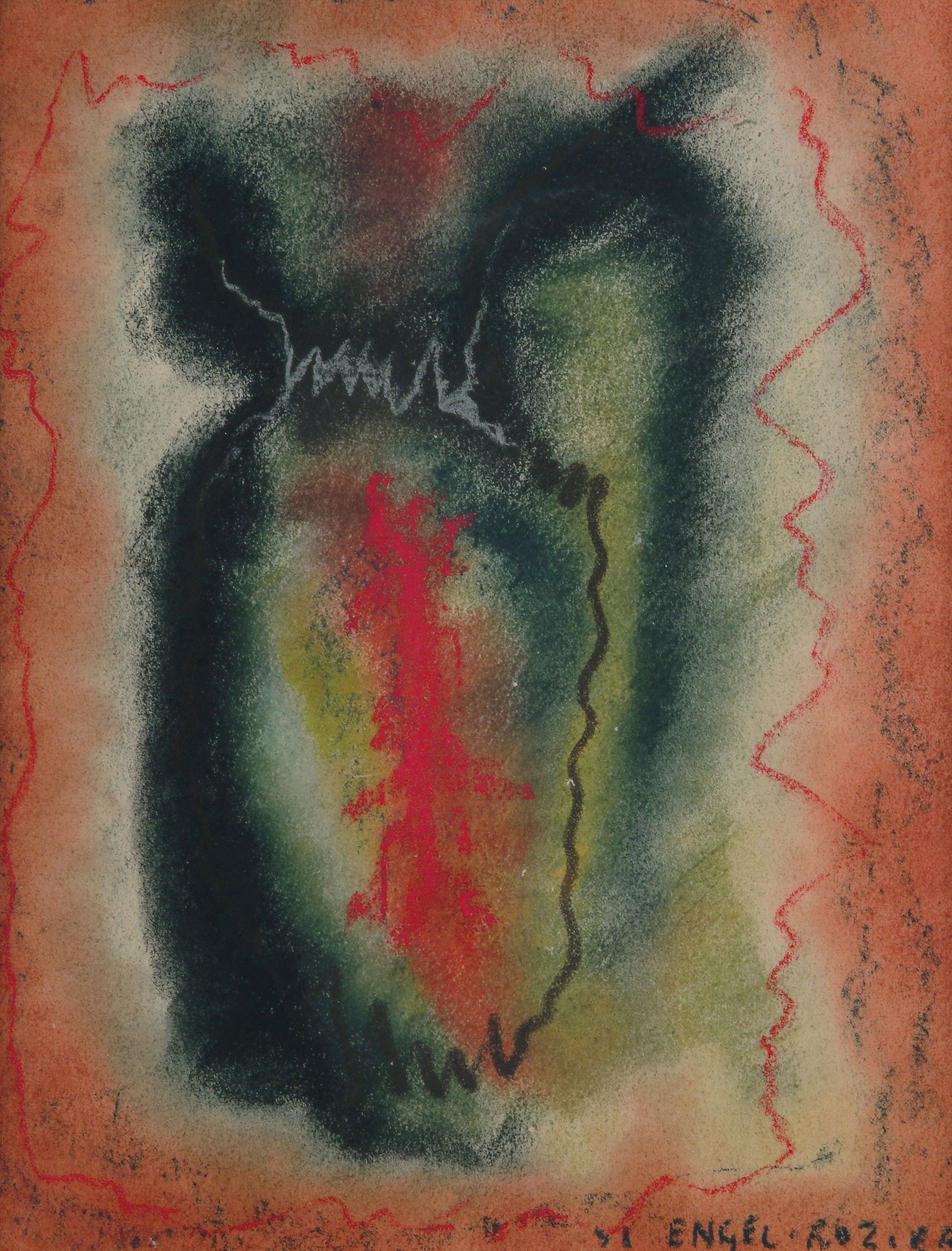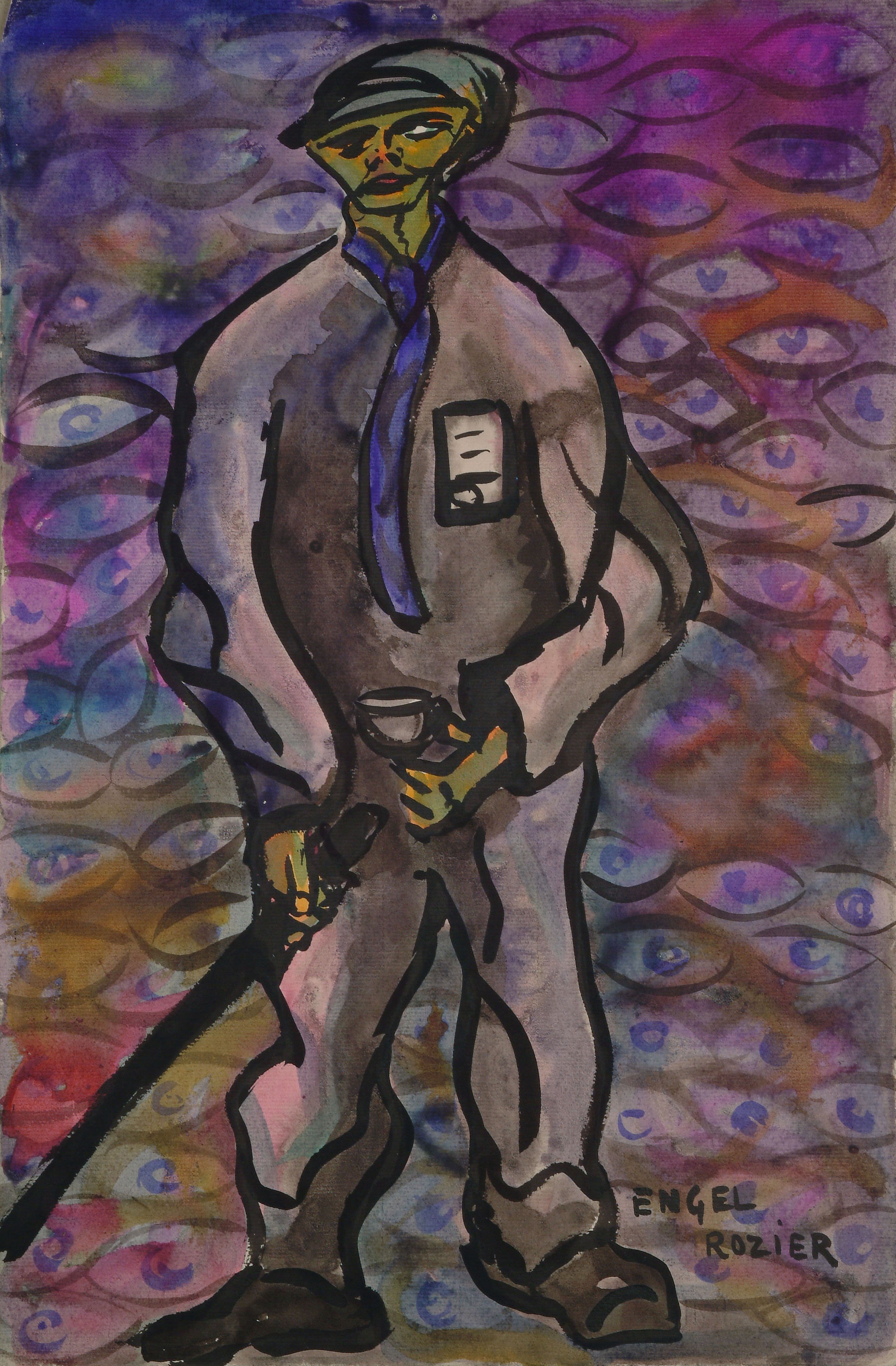The Early Years | 1920's - 1939
ENGEL-ROZIER’s early works, as he signed them at the time, were influenced by German Expressionism. They were figurative, and included powerful portraits with large generous strokes and thick layers of oil, illustrating worker struggles, the hard labour of peasants in Corsica and the bar crowd in Paris. In 1926, joining the Parisian art scene, Engel, like his close friend Torres-Garcia, explored his own style of geometric, structured Cubism. Engel’s work then evolved quickly towards a more poetic and lyrical Surrealism, depicting silhouettes, fluid shapes, insects and flowers, similar stylistically to the works of fellow Surrealist artist, Max Ernst, and preceding artists who came to define Surrealism. Engel, however, continued to reach for greater pictorial freedom, with lines, texture and contrast replacing faces and shapes in a newer form of Abstract Surrealism. He created extraordinary pastels, charcoals and China inks on paper. Together with Jean Helion and Theo Van Doesburg, he participated as an active member of the association of artists “Abstraction-Creation” from its inception. In 1931, Engel was already a pioneer of abstraction with some works reminiscent of those of Kandinsky, with whom he exhibited later in life.




























